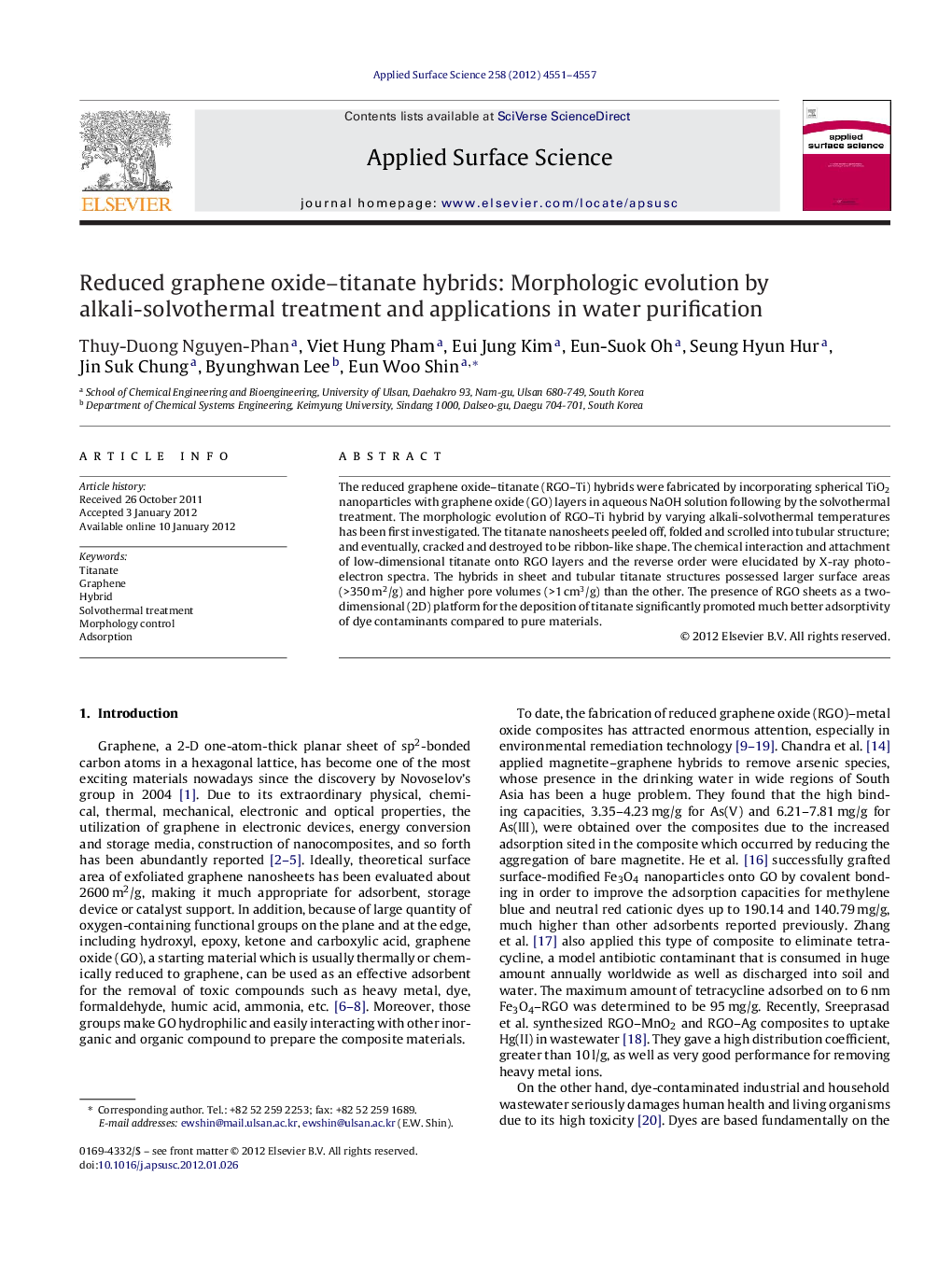| کد مقاله | کد نشریه | سال انتشار | مقاله انگلیسی | نسخه تمام متن |
|---|---|---|---|---|
| 5362211 | 1388282 | 2012 | 7 صفحه PDF | دانلود رایگان |

The reduced graphene oxide-titanate (RGO-Ti) hybrids were fabricated by incorporating spherical TiO2 nanoparticles with graphene oxide (GO) layers in aqueous NaOH solution following by the solvothermal treatment. The morphologic evolution of RGO-Ti hybrid by varying alkali-solvothermal temperatures has been first investigated. The titanate nanosheets peeled off, folded and scrolled into tubular structure; and eventually, cracked and destroyed to be ribbon-like shape. The chemical interaction and attachment of low-dimensional titanate onto RGO layers and the reverse order were elucidated by X-ray photoelectron spectra. The hybrids in sheet and tubular titanate structures possessed larger surface areas (>350Â m2/g) and higher pore volumes (>1Â cm3/g) than the other. The presence of RGO sheets as a two-dimensional (2D) platform for the deposition of titanate significantly promoted much better adsorptivity of dye contaminants compared to pure materials.
Highlights⺠Reduced graphene oxide-titanate hybrids are synthesized by solvothermal process. ⺠Reduced graphene oxide acts as a two dimensional platform for titanate growth. ⺠Titanate sheets transform into tubes or ribbons at high solvothermal temperatures. ⺠The hybrids possess large surface areas and high pore volumes. ⺠The hybrid materials exhibit excellent adsorptivity of dye contaminants.
Journal: Applied Surface Science - Volume 258, Issue 10, 1 March 2012, Pages 4551-4557